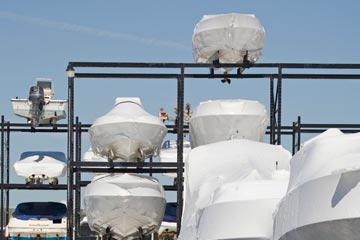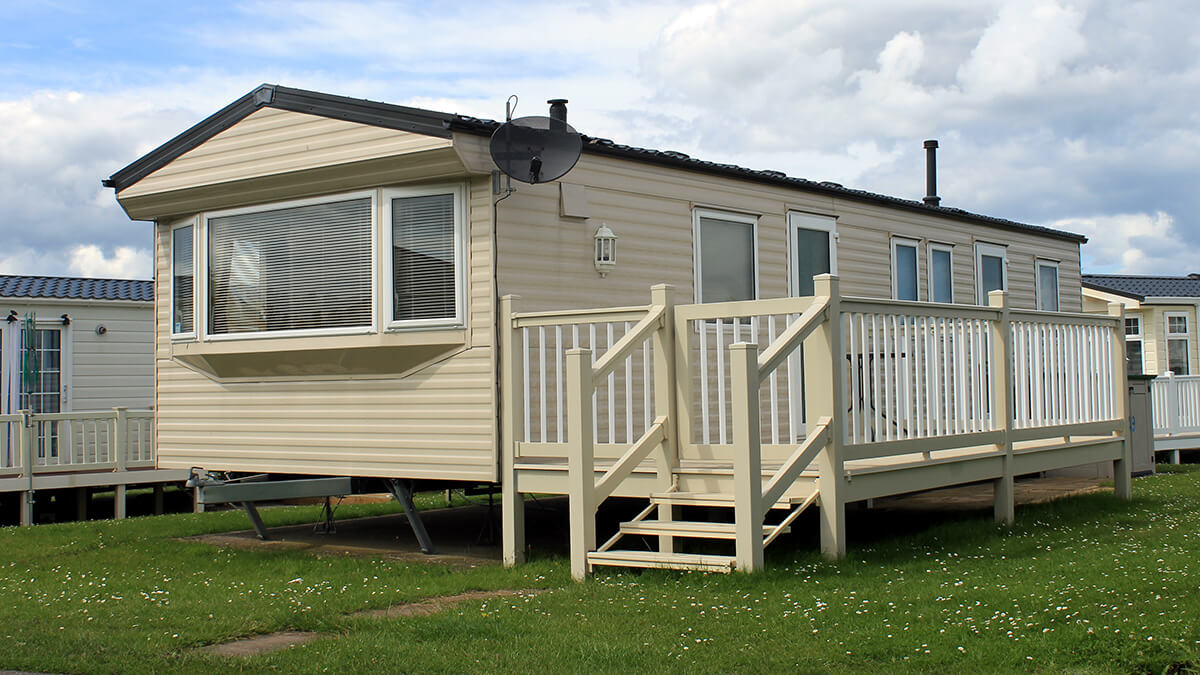Winterizing a boat

During a freeze, fresh water that has not been flushed out of a boat can cause major damage. Water left in pipes, plumbing lines, holding lines, sewage tanks or the engine has the potential to freeze and expand causing, potentially, thousands of dollars worth of damage to a boat.
A cracked engine from lack of winterization can be very costly. Even more, if you didn't take the time to winterize your boat, those damages may not be covered under your boat insurance policy. That's why it's so important to take some time to winterize your boat. An hour of prevention could save you thousands of dollars and one big headache.
Best time to winterize a boat
The best time to winterize your boat is when you've decided your boating season is over. For locations that have timely seasons it may be easy to figure out what time of year that is. In the Great Lakes region, for example, many boaters target Labor Day weekend as the right time to take their boat out of the water before the cold weather hits. For states like Texas, California or Florida that don't have a typical winter season, deciding when to winterize your boat can be a little harder. In fact, it's in these states that damage due to lack of winterization occurs the most.
How can you winterize if there is no winter? Winterization is really nothing more that following proper storage procedures. Whether a location has a typical winter or not, you should know how to properly store your boat because even a state like Texas can be hit with cold weather.
Who is typically affected?
According to Glenn Sladek, general claims adjuster for Farmers Insurance, boaters that live in a region that doesn't have a typical winter are the ones that need to be informed of proper boat winterization techniques. "The people that typically get burned are the people that don't have consistent winters. The weatherman says there's going to be a freeze, and unfortunately some people don't take any action to protect their boat. By the time the freeze occurs, the damage is done," says Sladek.
With 21 years of marine claim experience under his belt he has seen a plethora of damages associated with not winterizing boats. Sladek continues, "Winterization should only take an hour for boats under 26 feet and towed on a trailer. If you don't know how, any marine facility or dealer should be able to help you, but it's really not that hard to do."
Follow the steps below to winterize a boat
- The biggest step in boat winterization is to make sure ALL water is drained from the vessel. Any water left in pipes, plumbing lines, holding lines, sewage tanks, the lower unit or the engine has the potential to freeze and expand. Damage due to a freeze generally is not covered by your insurance policy, so if you don't know how to extract all the water properly get help from a professional to winterize your vessel.
- Today's modern fuel doesn't have a good shelf life and it will turn into a unusable gummy substance if you don't get it out of the system. Drain all the fuel from within the engine. Run the engine to get it out of the system making sure that cooling water is circulating through the engine. Once it's out of the system, fill up the fuel tanks so it doesn't develop condensation. Add a fuel preservative to the tank to keep the fuel from vaporizing and protect it from being exposed to the air.
- To minimize the effects of rust and corrosion, spray a petroleum-based or wax-based spray (like WD40) into the engine. Spray the cylinders and any of the metals that need to be protected.
- A simple, but often overlooked step is to remove the drain plug if the vessel is being stored ashore for storage. Sitting water in the boat not only has the potential to freeze and cause damage, but the weight of the water could be enough to pop the tires on a trailer and sink it into the ground or damage trailer axles. Remember to unplug the drain to allow any water that gets in-to get out. Just remember to plug it back in before you launch your boat back in the water. Tie the plug on the steering wheel if you need a reminder. It's also a good idea to regularly check the drain plug during the storage period to ensure it's not obstructed.
- Take down any sunshades, canvases or appendages that could be caught by the wind.
- Use a good tarp that's waterproof, covers the entire open area of the boat and can hold the weight of snow build-up. Make sure it's tight fitting so rodents can't get into the vessel. Like the drain plug, check the tarp regularly, especially after storms. Brush off snow build-up to alleviate the weight and make sure that rodents or insects haven't made your boat their winter home.
- If you are storing your boat on a trailer, remove the wheels and block the hubs so they sit off the ground. Cover the hubs with plastic so moisture is kept out. Park your trailer on level ground and out from under trees or limbs. Store the vessel at a slight angle, with the bow of your boat raised slightly. This will allow for proper drainage. While it's stored be sure to check it from time to time to make sure it hasn't tilted or shifted.


